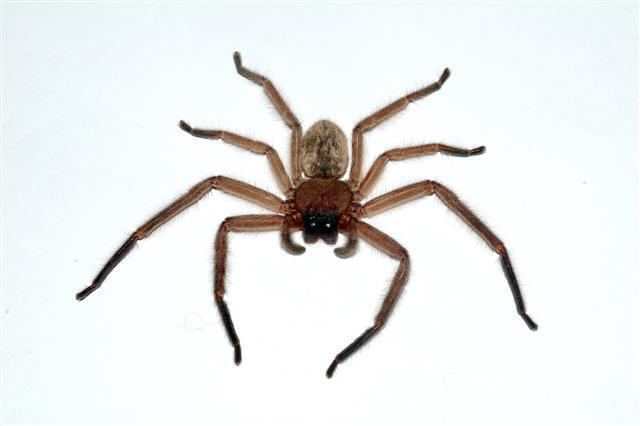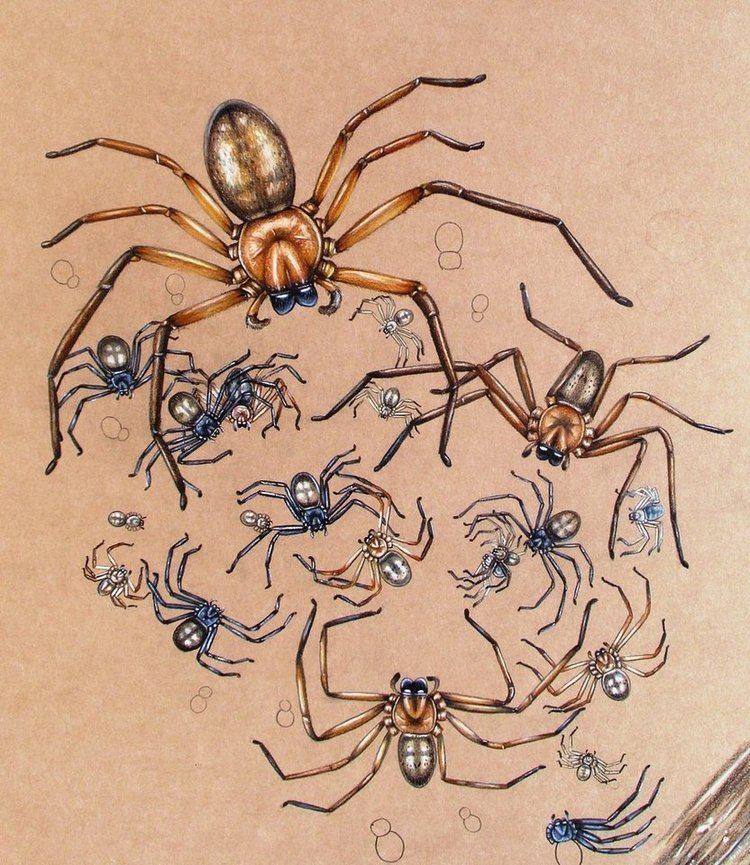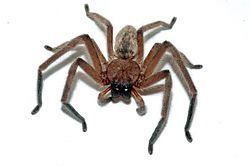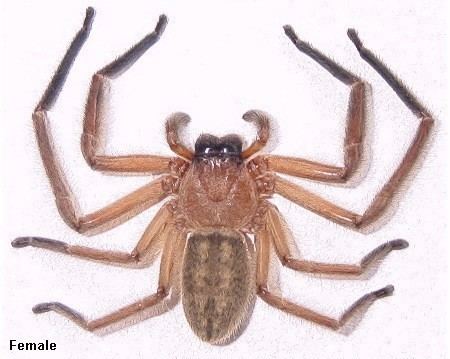Family Sparassidae | Order Araneae Genus Delena Rank Species | |
 | ||
Similar Delena, Rowlandius ubajara, Geratonephila burmanica, Psaltoda, Sericomyrmex | ||
Delena cancerides
Delena cancerides, the flat huntsman spider or social huntsman spider, is a large, brown huntsman spider native to Australia. It has been introduced to New Zealand, where it is sometimes known as the Avondale spider as they are commonly found in the suburb of Avondale, Auckland. This was the species used in the beginning of the movie Spider-Man and widely in Arachnophobia, and both films depict them as having a deadly venomous bite, but they are generally considered harmless to humans in real-life. It was first described by Charles Athanase Walckenaer in 1837.
Contents
- Delena cancerides
- Pet avondale spider australian huntsman delena cancerides
- Behavior
- Distribution
- Appearance and genetics
- References

Pet avondale spider australian huntsman delena cancerides
Behavior

Highly unusual among spiders, the flat huntsman spider is a social species, even sharing prey. They are often found under loose bark (their flat shape is an adaption for this) in colonies up to 300, but they are highly aggressive and commonly cannibalistic toward members from other colonies. They hunt their food rather than spin webs for it. They are timid towards humans and bites are infrequent, and when they occur, symptoms are usually very minor.
Distribution

The species is found all over Australia, including Tasmania. It was introduced to New Zealand in 1924. Its range in New Zealand expanded slowly out of Avondale, a suburb of Auckland, hence the alternative New Zealand common name. There is a sculpture in the Avondale shopping centre celebrating the spider.
Appearance and genetics

Male D. cancerides have a body length of 20–25 millimetres (0.79–0.98 in), while females are larger, with a body length of 25–32 mm (0.98–1.26 in). The body is light brown and covered in dense, fine hairs. The legs are also hairy, and can have a span up to 20 centimetres (7.9 in).

Various populations show major differences in the chromosomes, leading to the recognition of several "chromosomal subspecies", but these hybridize where in contact and there is little genetic divergence.
